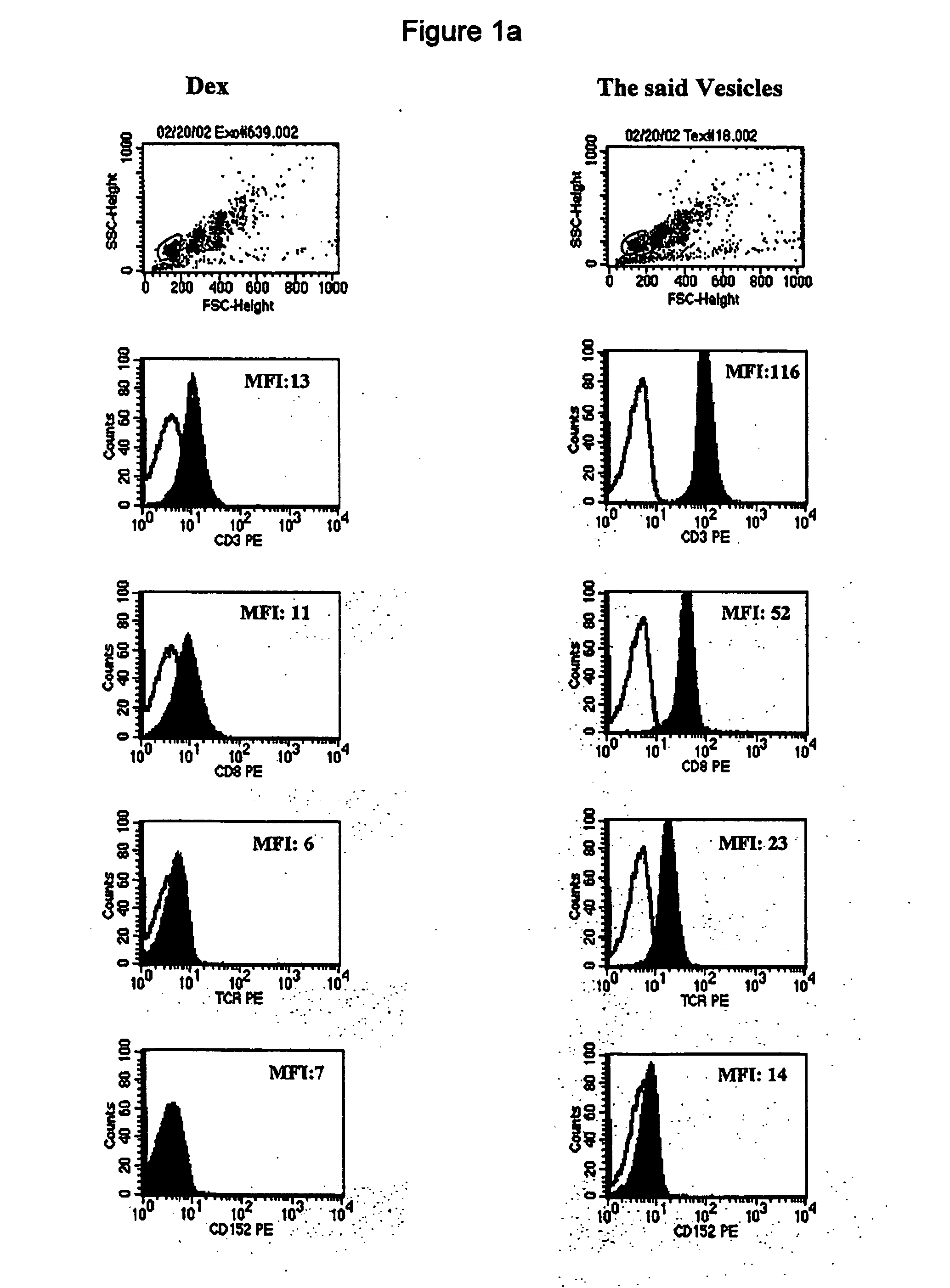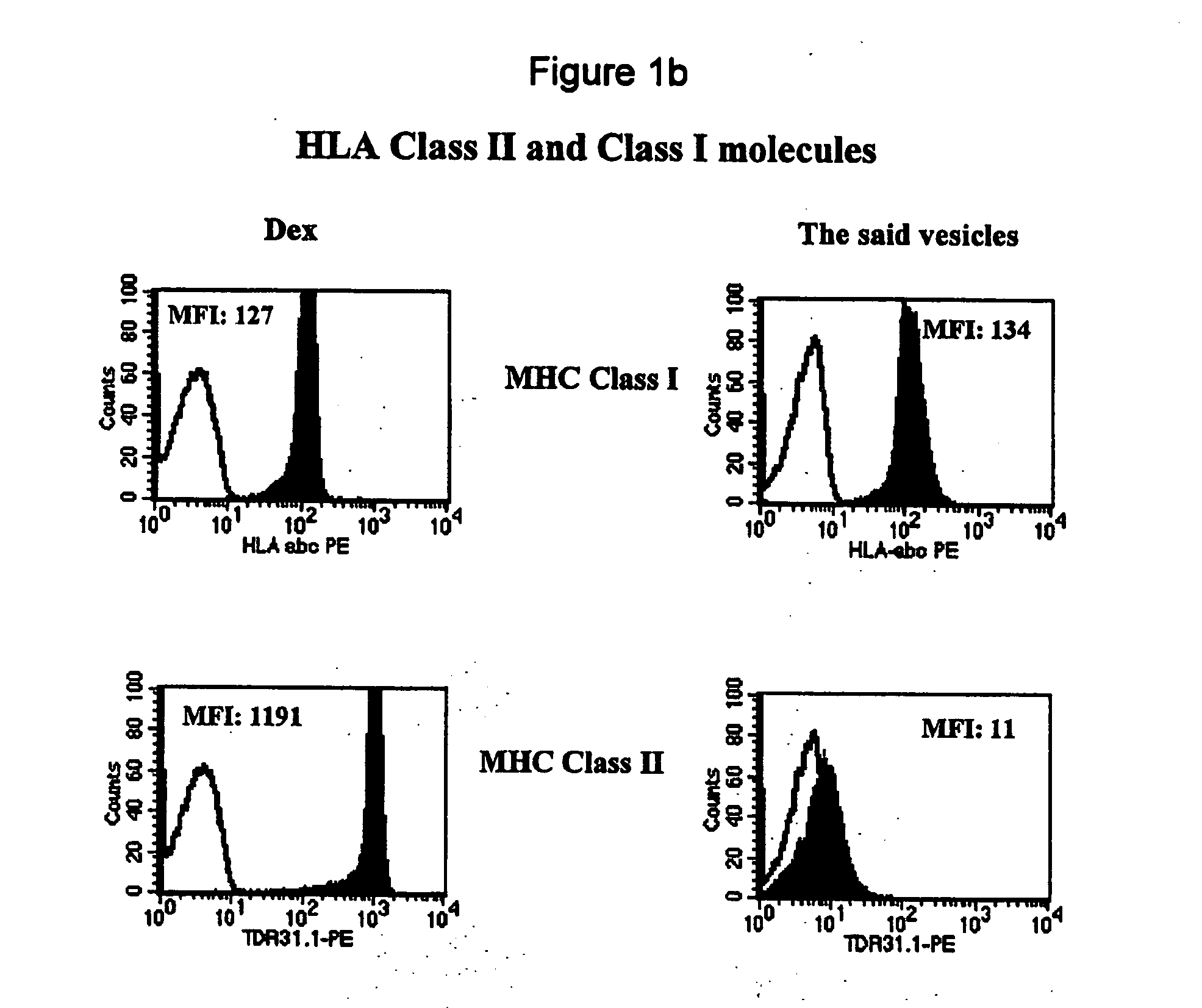Vesiles derived from t cells, production and uses
a technology of vesicles and t cells, applied in the field of vesicles derived from t cells, production and use, can solve the problems of no biological function described for these t cells exosomes, no efficient method of preparing these vesicles in a biologically active state, etc., to achieve efficient and/or selective delivery of molecules, improve yield, and improve the effect of vesicles
- Summary
- Abstract
- Description
- Claims
- Application Information
AI Technical Summary
Benefits of technology
Problems solved by technology
Method used
Image
Examples
examples
Materials and Methods
1. Generation of Vesicles from Primary T Cells and T Cell Line.
1.1. Generation of Vesicles from Primary T Cells.
CD3+ T cells are enriched to 90% purity from the non-adherent cells of PBMC by removing non-T cells with a nylon wool column. The enriched CD3+ T cells are diluted to 4-5×106 / ml and cultured in the filtered AIMV medium using one of the following methods: a. PHA at 1 μg / ml for 3 days, b. PMA at 5 ng / ml plus ionomycin at 250 ng / ml for 3 days, c. PHA at 1 μg / ml for 2 days. After replacing the medium with fresh and filtered AIMV medium, continuously culture fro another 4 days.
1.2. Generation of Vesicles from T Cell Line (Jurkat).
The Jurkat cells are diluted to 4-5×106 / ml and cultured in the filtered AIMV medium with PHA at 1 μg / ml for 4 days.
1.3. Purification of the Vesicles from T Cells
The vesicles produced according to examples 1.1 and 1.2 are purified from the T cell culture supernatant using the method disclosed in WO01 / 82958. Subseque...
PUM
| Property | Measurement | Unit |
|---|---|---|
| diameter | aaaaa | aaaaa |
| pH | aaaaa | aaaaa |
| pH | aaaaa | aaaaa |
Abstract
Description
Claims
Application Information
 Login to View More
Login to View More - R&D
- Intellectual Property
- Life Sciences
- Materials
- Tech Scout
- Unparalleled Data Quality
- Higher Quality Content
- 60% Fewer Hallucinations
Browse by: Latest US Patents, China's latest patents, Technical Efficacy Thesaurus, Application Domain, Technology Topic, Popular Technical Reports.
© 2025 PatSnap. All rights reserved.Legal|Privacy policy|Modern Slavery Act Transparency Statement|Sitemap|About US| Contact US: help@patsnap.com



